The best of the digital technology we use today often has fascinating roots. If you are interested in modern-day SSDs, you should know that compact storage devices using flash memory reached commercial markets in the early 2000s. One of them was the xD-Picture card, a storage solution for cameras and camcorders. Throughout this piece, you'll learn about what is an xD-Picture card, how well did it do, and what can you do in terms of xD card recovery.
1. What Is an xD-Picture Card?
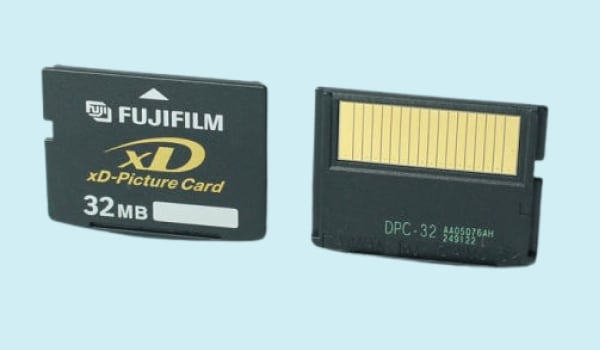
The 'xD' in the xD-picture card stands for "extreme Digital." It is a card that uses a flash-based NAND memory system to store data, similar to most SD cards and solid-state drives available today. It was initially designed to store high-pixel images from cameras, but card readers eventually allowed users to store other files.
History
The xD card was a joint venture between Olympus and Fujifilm, who were looking for a compact storage solution for a digital camera. While the MMC card had displayed a compact storage device back in 1997, Fujifilm requested an even smaller version with a decent storage capacity. The first xD-Picture cards hit the store shelves in 2002 and were the smallest digital storage device on the market.
It had a file transfer speed of 5 MB/s, which was phenomenal for the time. Nevertheless, it didn't take long for other manufacturers to catch up. The introduction of mini SD cards eventually phased out xD picture cards because mini SD cards were even smaller and had a larger storage capacity. The xD-Picture card was discontinued in 2009.
Usage
While many people named it the xD picture card, it actually proved helpful in several applications when you have a compatible card reader:
- Storing photos, videos, and other media files
- Backing up critical system data like Windows Recovery or macOS Time Machine
- Building a boot drive for a Linux OS
- Preserving encrypted data strings and passwords
Pros & Cons
Despite being more than two decades old, an xD-Picture card still has its advantages as well as the following disadvantages, which might make you prefer other forms of storage devices
Pros
Limited port compatibility means that your data is more secure than other forms of offline storage devices. Moreover, you can encrypt the card to add another layer of security.
The neat size makes it easy to carry within a zip locker or sleeve.
xD-Picture cards are usually more resilient to external damage than most SD cards.
Cons
The maximum file transfer speed is 5 MB/s, which is too slow by modern standards.
The direct access to NAND flash memory means that the card has a shorter life span than other solid-state memory devices.
The maximum storage capacity is 2 GB, less than most other MMCs, SD cards, and flash drives available today. Further, the cost is much higher than storage devices with similar capacity.
Although developed initially for cameras, it is incompatible with most modern photography devices.
Due to being discontinued in 2009, it is tough to purchase a xD-Picture card outside selected online retailers.
2. Types of xD-Picture Cards
Since digital cameras came in various shapes and sizes during the 2000s, there was a demand for various versions of storage devices that differed in size and capacity. xD Card types can be any of the following:

Type S
It was the earliest version of the xD picture card that hit the stores in 2002. Type S xD cards were available in 16 MB to 512 MB storage capacities. They used a single-level flash memory system, which allowed for dimensions as small as 20 mm x 25 mm x 1.78 mm.
Type H
This version increased the read/write speed over the Type S xD card. With Type H, you can get reading speeds of up to 5 MB/s and writing rates of up to 4 MB/s. Type H xD cards were available with a maximum storage capacity of 2 GB.
Type M/M+
To further increase the storage capacity, Olympus released the Type M xD cards in 2005. These used a multi-level flash memory system that could theoretically increase the storage capacity of 8 GB. Still, versions with more than 2 GB of storage were never manufactured.
The storage architecture made the reading and writing of data slower. It is where Type M+ xD cards showed their advantage with 3 times the speed of regular Type S cards. Fuji eventually halted production of Type M+ cards in 2008, citing high manufacturing costs.
3. xD-Picture Card vs. SD Card - What's The Difference
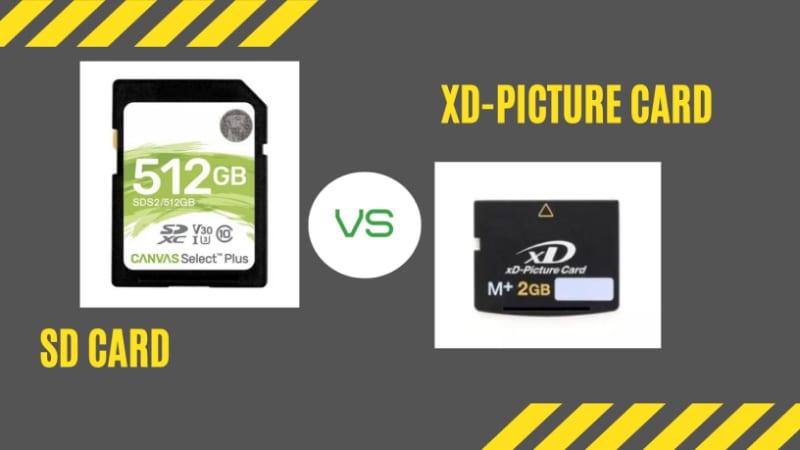
Both xD and SD cards work on the same basic principle, but there is a considerable difference between them. SD cards have an 8-pin data interface that allows high volumes of data to transfer quickly and smoothly. With SD cards, you can get up to 2 TB storage capacities and read/write speeds of 985 MB/s.
SD cards can retain their stored data for 5 years. However, there can be instances when you lose your data due to corrupt paths or malware. Yet, it shouldn't cause you distress for long, as you can use Wondershare Recoverit to retrieve your data.
You can use the below table to observe the differences between xD picture cards and SD cards:
xD-Picture Card |
SD Card |
| Available in a single size | Come in various sizes |
| Rare for cameras after 2010 | Used in almost all digital devices since 2005 |
| Low data transfer speed (maximum 6 MB/s) | High data transfer speed (maximum 985 MB/s) |
| Maximum storage capacity of 2 GB | Maximum storage capacity of 2 TB |
| High durable and less susceptible to external damage | Sensitive to physical damage and disruptive elements like water |
4. How to Read an xD-Picture Card
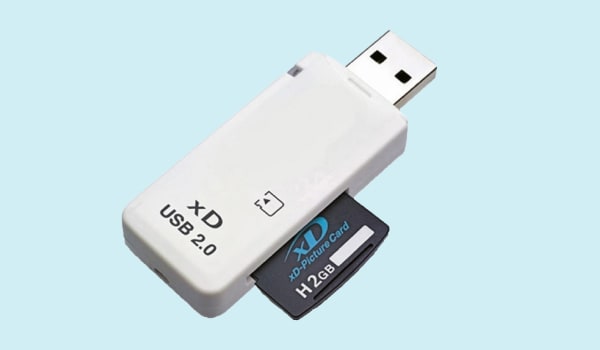
Most card readers might still be compatible with reading an xD-Picture card. Some of the best ones that you can get include:
- SanDisk ImageMate Pro
- Kingston Nucleum
- Transcend USB Card Reader
- Sony CFExpress Type B Card Reader
Alternatively, you can connect a camera or camcorder with an xD card slot to your computer.
These card readers not only allow you to read/write data from an xD-Picture card, but also enable the use of third-party software to repair xD cards. You can go to our article fix an xD card error for more information.
5. How to Recover Lost or Deleted Files from an xD-Picture Card
While they are resilient to external factors like dust and moisture, xD picture cards are susceptible to data loss due to the following causes:
- Deleting data by mistake
- Virus or malware
- Corrupted data paths
- Damage from physical impacts
- Extreme heat or cold
You need not lose hope in any of these cases. A professional data recovery software like Wondershare Recoverit can assist you with xD card recovery. It is a robust software that can completely recover your deleted and lost files, videos, photos, audio, etc. from any disaster!
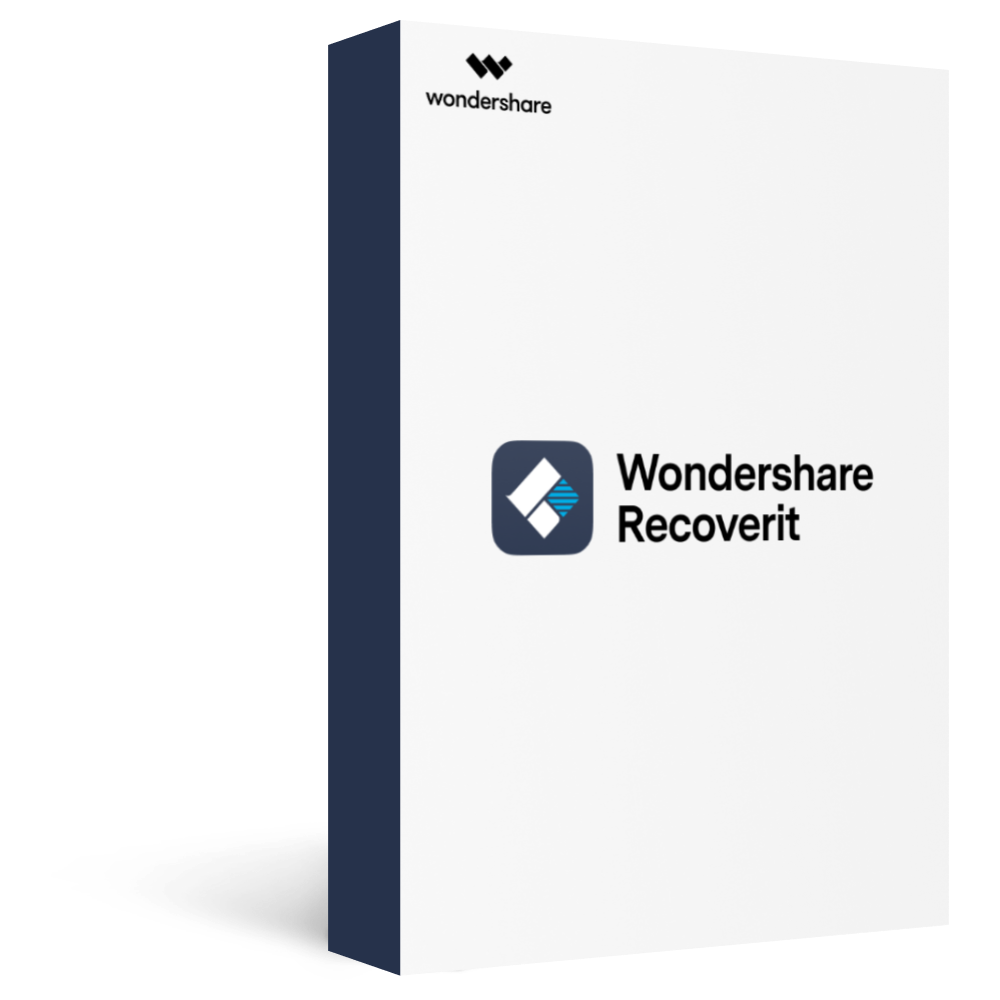
Wondershare Recoverit - Your Safe & Reliable xD-Picture Card Recovery Software
5,481,435 people have downloaded it.
Recover lost or deleted files, photos, audio, music, emails from xD-Picture cards effectively and completely.
Recover data after sudden deletion, formatting, memory card damage, virus attack, system crashes, etc.
Restore files from 5000+ storage devices like digital cameras, camcorders, drones, USB Drive, SD cards, SSDs, HDDs, etc.
Preview files before you recover them. No payment is required if the files are unrecoverable.
Recoverit Free to try and paid version to enjoy more.
To recover data from your xD picture card, follow the process below:
Step1Choose the xD-Picture Card for Recovery
Connect your xD-Picture card to computer through the card reader. Then, select your xD card in the SD Card section and click on the Scan button.
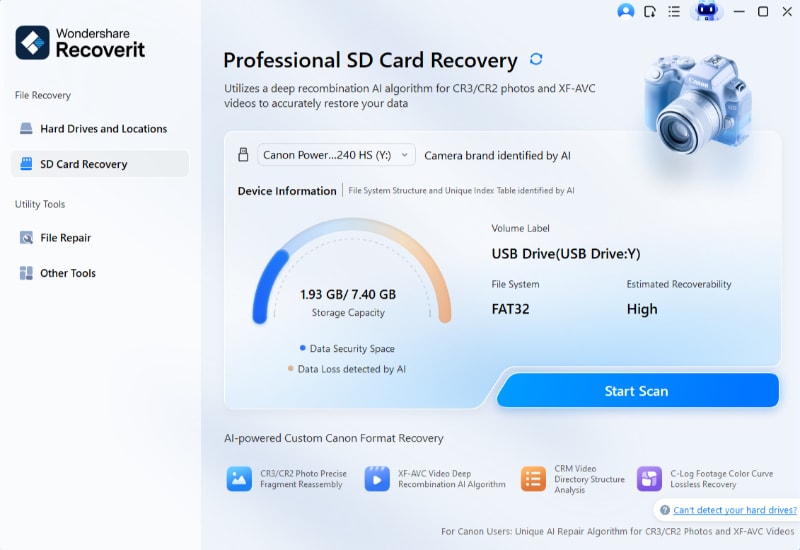
Step2Scan the xD-Picture Card
Recoverit xD-Picture card recovery tool will automatically start scanning the card for deleted or lost files. The scanning process takes seconds or minutes depending on the file size.
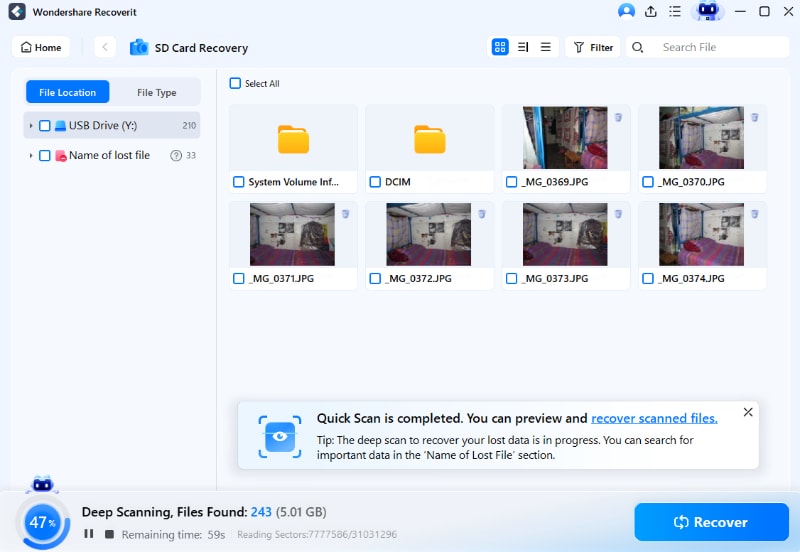
Step3Preview and Recover
Once the scan concludes, choose the files that you wish to recover. Furthermore, you can ensure that you are on the right track by previewing the files before recovery.

Step4Enhanced Recovery
Suppose you want to restore a precious video file, sometimes, you might find the video corrupt or unplayable after the preview using the software. This is because video files have a larger file size than documents or photos, and they are stored in thousands to tons of video fragments on storage devices. But don't woryy. Recoverit xD Card Recovery software offers the Enhanced Recovery feature with patented technology. It automatically scans, gathers, and matches the video fragments and thus ensures most of your videos are recovered completely from DSLRs, Digital cameras, Drones, Actioncams, camcorders, SD cards, PC, HDDs, or any other source. All you have to do is click the "Enhanced Recovery." option
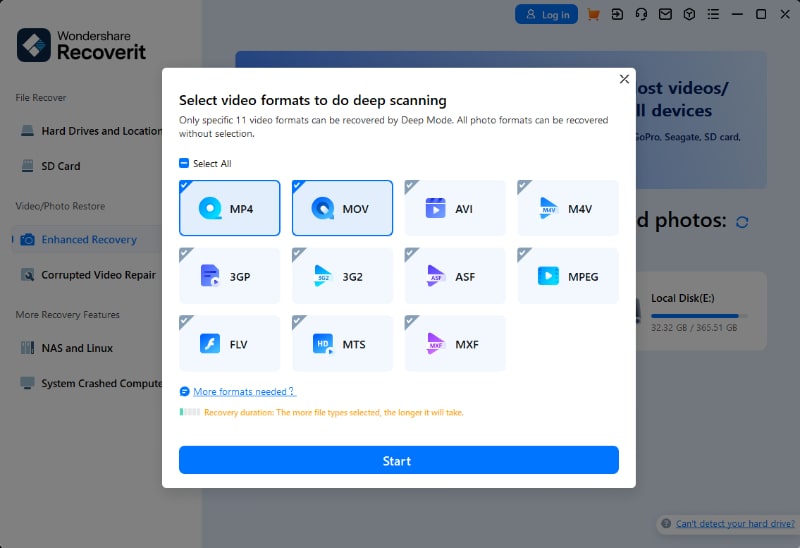
For Windows XP/Vista/7/8/10/11
For macOS X 10.10 or later
People Also Ask
Can I Use an xD Picture Card with My Phone?
Yes, as almost all smartphones today can attach an external card reader. If you have one compatible with an xD picture card, you can connect it to your smartphone using an adapter. The xD card will read just like any other SD card on your device.
Can You Use an SD Card in an xD Camera?
Yes, although you need an adapter to use a micro SD card in a camera with an xD card slot.
Conclusion
Now that you've learned what is xD-Picture card, you can evaluate whether it suits your needs. It is a handy offline data storage solution that you can still use with a PC today. Sure, there can be instances when data losses create some inconvenience, but Wondershare Recoverit can help alleviate that to a large extent.

 ChatGPT
ChatGPT
 Perplexity
Perplexity
 Google AI Mode
Google AI Mode
 Grok
Grok























